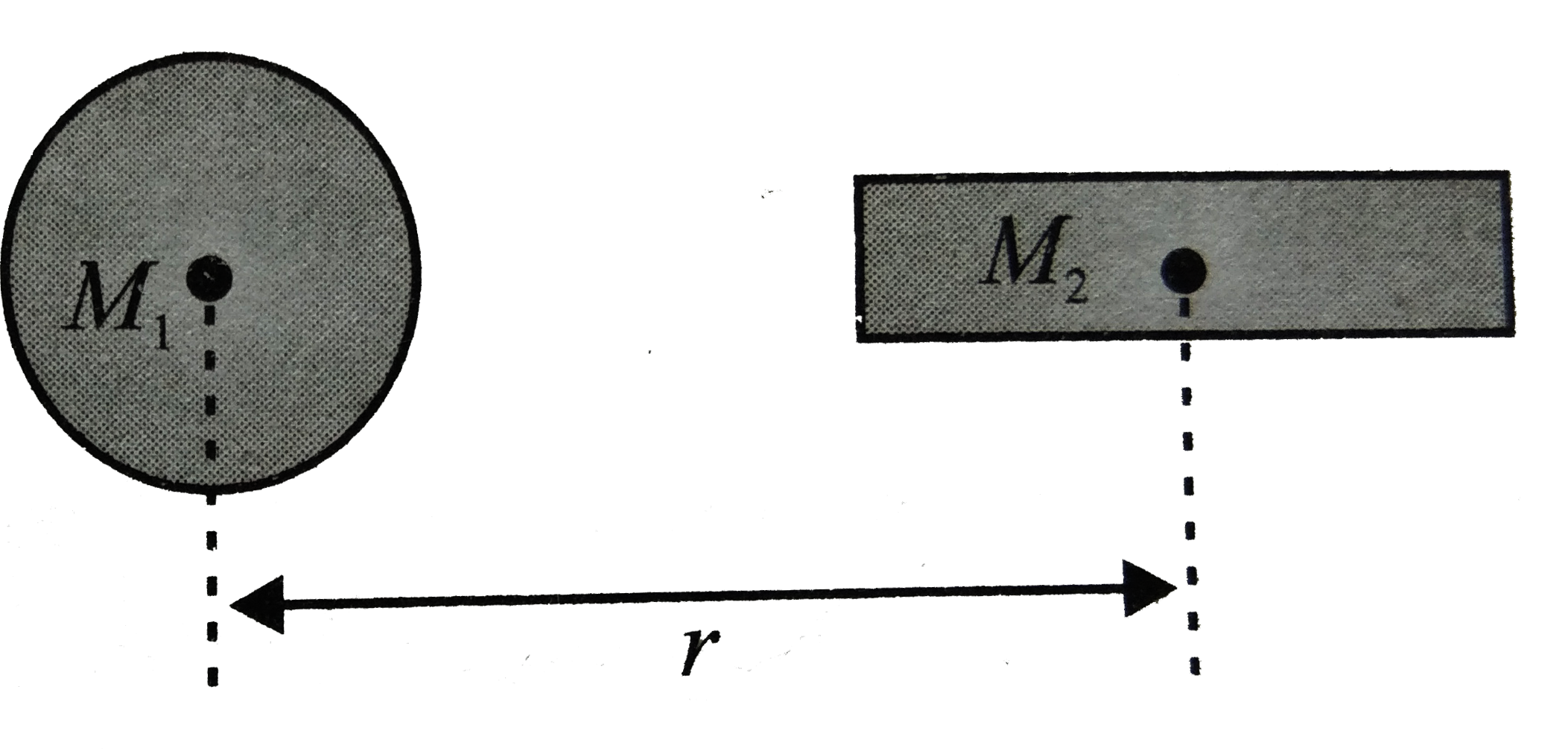State Newton's law of gravitational.
Step-by-Step Solution:
1. Understanding the Concept: Newton's law of gravitation states that every particle in the universe attracts every other particle with a force that is dependent on their masses and the distance between them.
2. Identifying the Relationship: The gravitational force (F) between two masses (m1 and m2) is directly proportional to the product of their masses. This means that if either mass increases, the gravitational force increases.
3. Considering the Distance: The gravitational force is inversely proportional to the square of the distance (r) between the centers of the two masses. This means that as the distance increases, the gravitational force decreases.
4. Formulating the Law Mathematically: The relationship can be expressed mathematically as:
F∝m1⋅m2r2
where:
- F is the gravitational force,
- m1 and m2 are the masses of the two particles,
- r is the distance between the centers of the two masses.
5. Introducing the Gravitational Constant: To express the proportionality as an equation, we introduce the gravitational constant (G):
F=Gm1⋅m2r2
where G is a constant that quantifies the strength of the gravitational force.
6. Conclusion: Thus, Newton's law of gravitation can be summarized as: Every particle attracts every other particle with a force that is directly proportional to the product of their masses and inversely proportional to the square of the distance between them.
---
F∝m1⋅m2r2
where:
- F is the gravitational force,
- m1 and m2 are the masses of the two particles,
- r is the distance between the centers of the two masses.
F=Gm1⋅m2r2
where G is a constant that quantifies the strength of the gravitational force.
Topper's Solved these Questions
- BOOK - ICSECHAPTER - GRAVITATIONEXERCISE - SHORT ANSWER QUESTIONS27videos
GRAVITATION
- BOOK - ICSECHAPTER - GRAVITATIONEXERCISE - VERY SHORT ANSWER QUESTIONS12videos
GRAVITATION
- BOOK - ICSECHAPTER - GRAVITATIONEXERCISE - CONCEPTUAL SHORT ANSWER QUESTIONS WITH ANSWERS22videos
GRAVITATION
- BOOK - ICSECHAPTER - FRICTIONEXERCISE - Selected problems30videos
FRICTION
- BOOK - ICSECHAPTER - INTERNAL ENERGY EXERCISE - SELECTED PROBLEMS (FROM HEAT ENGINES)21videos
INTERNAL ENERGY
Similar Questions
State Newton.s law of gravitation. Distinguish between g and G.
View SolutionKepler's third law states that square of period revolution (T) of a planet around the sun is proportional to third power of average distance i between sun and planet i.e. T2=Kr3
here K is constant
if the mass of sun and planet are M and m respectively then as per Newton's law of gravitational the force of alteaction between them is F=GMmr2, here G is gravitational constant. The relation between G and K is described asView SolutionAccording to Newton's law of gravitation each particle attracts every other particle. But we do not see bodies on the surface of the earth moving towards each other. Why?
View SolutionStatement I: The force of gravitation between a sphere and a rod of mass M2 is =(GM1M2)/r.
Statement II: Newton's law of gravitation holds correct for point masses.
 View Solution
View SolutionAssertion : The centres of two cubes of masses m1andm2 are separated by a distance r. The gravitational force between these two cubes will be Gm1m2r2
Reason : According to Newton's law of gravitation, gravitational force between two point masses m1andm2 separated by a distance r is Gm1m2r2.View SolutionSupposing Newton's law of gravitation for gravitation forces F1 and F2 between two masses m1 and m2 at positions r1 and r2 read
where M0 is a constant of dimension of mass, r12=r1−r2 and n is a number. In such a case,View SolutionNewton's law of gravitation is universal because
View SolutionState the Newton's laws of motion. What is the SI unit of force ?
View SolutionState Newton's second law of motion. Under what condition does it take the form F = ma ?
View SolutionState Newton's third law of motion.
View Solution

